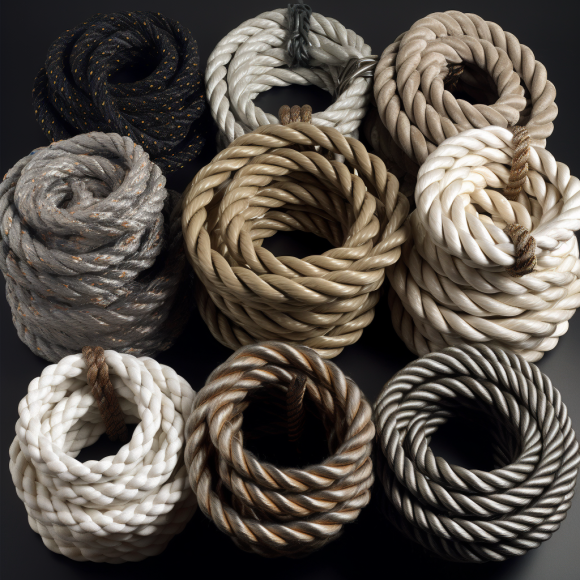
The Grip Challenge: Why Smaller Diameter Ropes Put Your Strength to the Test
Size matters when it comes to rope grips. Many athletes and fitness enthusiasts have probably noticed that grabbing a smaller diameter rope is more difficult than gripping a bigger diameter rope. In this blog post, we'll look at why smaller diameter ropes give a larger grip difficulty and how it can help your strength and general fitness.
higher Contact Pressure: The higher contact pressure is the first reason why smaller diameter ropes are more difficult to grip. The surface area in contact with your hand diminishes as the diameter shrinks, resulting in more pressure per square inch. This increased pressure puts additional strain on your grip strength, necessitating more muscular engagement and endurance.
Finger Flexor Strength Increased: Gripping a smaller diameter rope puts more emphasis on your finger flexor muscles. These muscles in your forearm are in charge of flexing and closing your fingers. When you hold a smaller rope, your finger flexors have to work harder to maintain a stable grip, which leads to increased finger strength and control over time.
Grip Endurance Improvement: Training with smaller diameter ropes can considerably improve your grip endurance. Working with thinner ropes requires your muscles to retain their grip for longer periods of time due to the greater effort placed on your grip strength. This endurance training can benefit a variety of sports and activities that need extended grip strength, such as rock climbing, obstacle course racing, and martial arts.
Functional and practical applications: Using smaller diameter ropes for grip training has real-world applications. Consider instances in which you must grasp narrow objects or use instruments with slim handles. Training with smaller ropes helps you develop the grip strength and dexterity required for such jobs, which improves your overall functionality and performance in a variety of activities.
Smaller diameter ropes allow adaptability and progression in your training regimen. They can easily be integrated into a variety of workouts, like as pull-ups, rows, or rope climbs, to provide a new challenge to your grip strength development. Furthermore, as you advance and gain grip strength, you may gradually shift to smaller diameter ropes, pushing your limitations and achieving new levels of strength.
Conclusion: Don't overlook the grip challenge presented by smaller diameter ropes. Incorporating them into your workout program can help you improve your grip strength, finger flexor development, and grip endurance. Accept the challenge and watch your overall strength and performance increase across multiple activities. Remember that while size makes rope grips more difficult, it also makes you stronger!
To minimize injury, it is critical to maintain good form and technique when practicing with smaller diameter ropes. Seek advice and training from a skilled trainer or coach.
higher Contact Pressure: The higher contact pressure is the first reason why smaller diameter ropes are more difficult to grip. The surface area in contact with your hand diminishes as the diameter shrinks, resulting in more pressure per square inch. This increased pressure puts additional strain on your grip strength, necessitating more muscular engagement and endurance.
Finger Flexor Strength Increased: Gripping a smaller diameter rope puts more emphasis on your finger flexor muscles. These muscles in your forearm are in charge of flexing and closing your fingers. When you hold a smaller rope, your finger flexors have to work harder to maintain a stable grip, which leads to increased finger strength and control over time.
Grip Endurance Improvement: Training with smaller diameter ropes can considerably improve your grip endurance. Working with thinner ropes requires your muscles to retain their grip for longer periods of time due to the greater effort placed on your grip strength. This endurance training can benefit a variety of sports and activities that need extended grip strength, such as rock climbing, obstacle course racing, and martial arts.
Functional and practical applications: Using smaller diameter ropes for grip training has real-world applications. Consider instances in which you must grasp narrow objects or use instruments with slim handles. Training with smaller ropes helps you develop the grip strength and dexterity required for such jobs, which improves your overall functionality and performance in a variety of activities.
Smaller diameter ropes allow adaptability and progression in your training regimen. They can easily be integrated into a variety of workouts, like as pull-ups, rows, or rope climbs, to provide a new challenge to your grip strength development. Furthermore, as you advance and gain grip strength, you may gradually shift to smaller diameter ropes, pushing your limitations and achieving new levels of strength.
Conclusion: Don't overlook the grip challenge presented by smaller diameter ropes. Incorporating them into your workout program can help you improve your grip strength, finger flexor development, and grip endurance. Accept the challenge and watch your overall strength and performance increase across multiple activities. Remember that while size makes rope grips more difficult, it also makes you stronger!
To minimize injury, it is critical to maintain good form and technique when practicing with smaller diameter ropes. Seek advice and training from a skilled trainer or coach.



Leave a comment
This site is protected by hCaptcha and the hCaptcha Privacy Policy and Terms of Service apply.